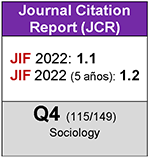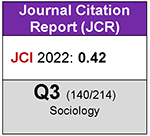Young people with no ties. The role of intermediate structures in a disadvantaged area
DOI:
https://doi.org/10.5477/cis/reis.150.23Keywords:
Social Action • Human Capital • Social Capital • Inequality • Youth • Ethnic Minorities • Segregation • Civil Society, Social Action, Human Capital, Social Capital, Inequality, Youth, Ethnic minorities, Segregation, Civil SocietyAbstract
This article describes the new forms of youth disaffi liation (Castel, 1995), taking a deprived urban area of Madrid as a case study. Through an ethnographic methodology, this study examines the role (positive or negative) played by intermediate structures (the family, the ethic community and the associations) in the social integration of youth from Moroccan, Dominican and Ecuadorian origin. As the sociology of education (Bourdieu, 1970) has been demonstrated, I describe the fundamental role of the family in the process of reintegration. In the other hand, the research shows the double effects of the ethnic networks in youth integration and demonstrates the crucial role of local associations. These organizations, benefi ciary from the social mobilization in the 70s, have the capacity to offer new ways of integration, through an effective collaboration between the administrations, the families and the ethnic communities.
Downloads
Downloads
Published
How to Cite
Issue
Section
License
Copyright (c) 2024 Revista Española de Investigaciones Sociológicas

This work is licensed under a Creative Commons Attribution-ShareAlike 4.0 International License.
Permite Compartir — copiar y redistribuir el material en cualquier medio o formato, Adaptar — remezclar, transformar y construir a partir del material para cualquier propósito, incluso comercialmente.








